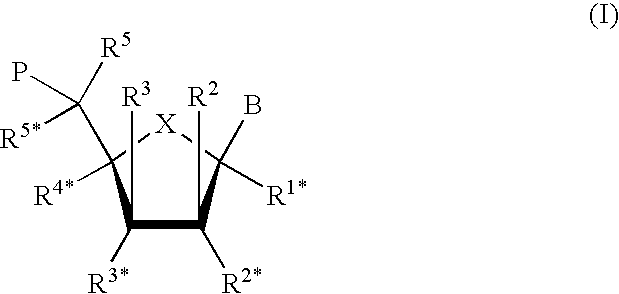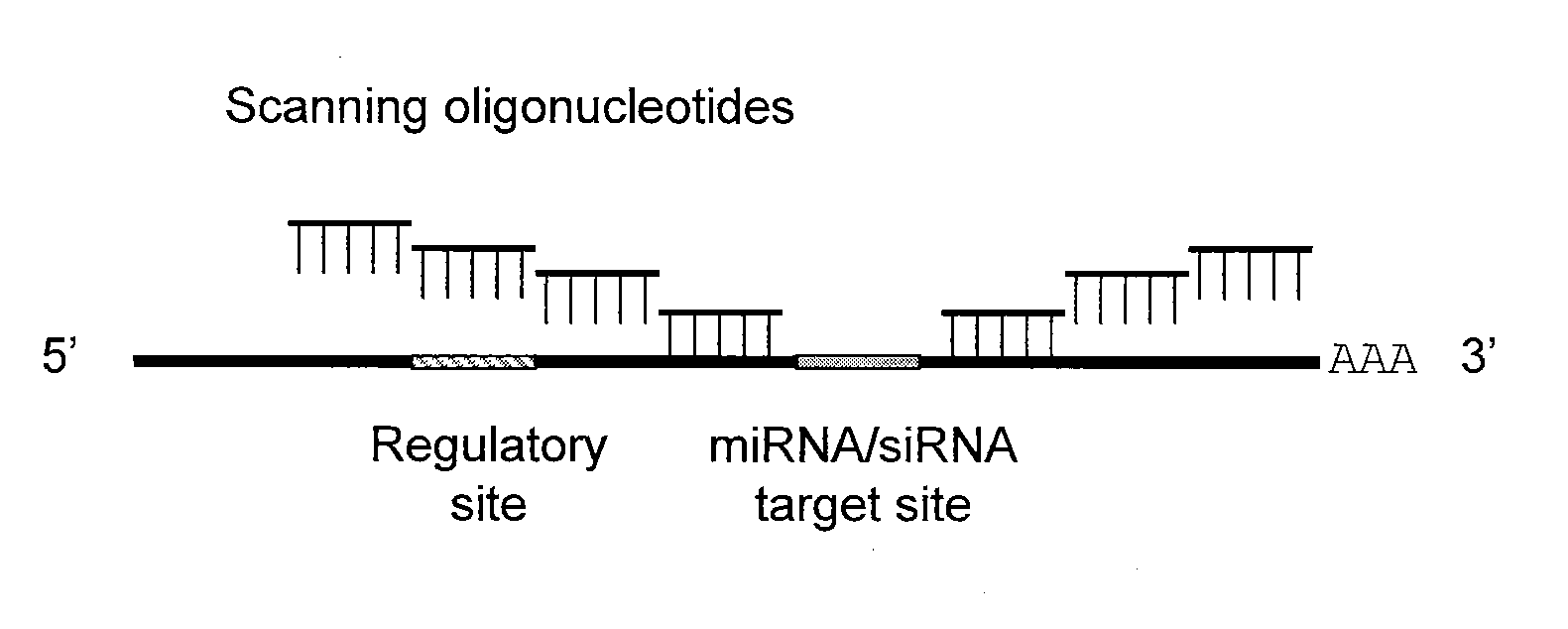Blocking oligos for inhibition of microrna and sirna activity and uses thereof
a technology of blocking oligos and microrna, which is applied in the field of blocking oligos for inhibiting microrna and sirna activity, can solve the problems of poor sensitivity, low throughput, and inability to guarantee mirna activity on the target mrna in the same cell, and achieves high sequence specificity for rna target sequences and improved sensitivity
- Summary
- Abstract
- Description
- Claims
- Application Information
AI Technical Summary
Benefits of technology
Problems solved by technology
Method used
Image
Examples
example 1
Synthesis, Deprotection and Purification of LNA-Substituted Oligonucleotides
[0241]LNA-substituted oligos were prepared on an automated DNA synthesizer (Expedite 8909 DNA synthesizer, PerSeptive Biosystems, 0.2 μmol scale) using the phosphoramidite approach (Beaucage and Caruthers, Tetrahedron Leff. 22: 1859-1862, 1981) with 2-cyanoethyl protected LNA and DNA phosphoramidites, (Sinha, et al., Tetrahedron Lett. 24: 5843-5846, 1983). CPG solid supports derivatised with a suitable quencher and 5′-fluorescein phosphoramidite (GLEN Research, Sterling, Va., USA). The synthesis cycle was modified for LNA phosphoramidites (250 s coupling time) compared to DNA phosphoramidites. 1H-tetrazole or 4,5-dicyanoimidazole (Proligo, Hamburg, Germany) was used as activator in the coupling step.
[0242]The probes were deprotected using 32% aqueous ammonia (1 h at room temperature, then 2 hours at 60° C.) and purified by HPLC (Shimadzu-SpectraChrom series; Xterra™ RP18 column, 10 μM 7.8×150 mm (Waters). Bu...
example 2
Design of Blocking Molecules
[0243]Previous experiments using antagonizing oligos have demonstrated that important parameters for successful design are probe Tm and oligo self-annealling. If oligonucleotide Tm is too low, the efficiency is generally poor, maybe due to the oligo being removed from the target sequence by endogenous helicases. If Tm is too high, there is an increased risk that the oligo will anneal to partly complementary sites possibly leading to unspecific effects, known as off-targets effects. With respect to selfannealing (autocomplementarity) of the probe, a low selfannealing score (reflecting stability of the autoduplex) is favorable. Previous results have shown that probes exceeding a selfannealing score of about 45 often show very low potency or are completely nonfunctional. The effect of a high selfannealing score is a stable autoduplex which obviously sequestrates large amounts of probes, preventing the probe from interacting with its target sequence. To avoid...
PUM
| Property | Measurement | Unit |
|---|---|---|
| Tm | aaaaa | aaaaa |
| Tm | aaaaa | aaaaa |
| Tm | aaaaa | aaaaa |
Abstract
Description
Claims
Application Information
 Login to View More
Login to View More - R&D
- Intellectual Property
- Life Sciences
- Materials
- Tech Scout
- Unparalleled Data Quality
- Higher Quality Content
- 60% Fewer Hallucinations
Browse by: Latest US Patents, China's latest patents, Technical Efficacy Thesaurus, Application Domain, Technology Topic, Popular Technical Reports.
© 2025 PatSnap. All rights reserved.Legal|Privacy policy|Modern Slavery Act Transparency Statement|Sitemap|About US| Contact US: help@patsnap.com



